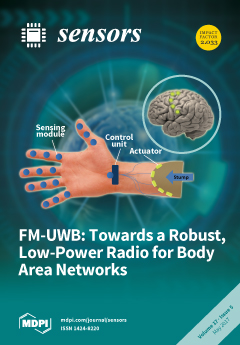Open AccessArticle
A Wireless Sensor Network for Growth Environment Measurement and Multi-Band Optical Sensing to Diagnose Tree Vigor
by
Shinichi Kameoka 1,†, Shuhei Isoda 1, Atsushi Hashimoto 1, Ryoei Ito 1, Satoru Miyamoto 2, Genki Wada 3, Naoki Watanabe 3, Takashi Yamakami 4, Ken Suzuki 4 and Takaharu Kameoka 1,*,†
1
Graduate School of Bioresources, Mie University, 1577 Kurimamachiya-cho, Tsu City 514-8507, Mie, Japan
2
Sumitomo Precision Products Co., Ltd., 1-10 Fuso-cho, Amagasaki City 660-0891, Hyogo, Japan
3
Tomi no Oka Winery, Suntory Wine International Limited, 2786, Ohnuta Kai-shi 400-0103, Yamanashi, Japan
4
Department of Agriculture, Kisyu Agricultural Extension Center, Mie Prefectural Government, 371 Idomachi, Kumano City 519-4300, Mie, Japan
†
These authors contributed equally to this work.
Cited by 30 | Viewed by 7032
Abstract
We have tried to develop the guidance system for farmers to cultivate using various phenological indices. As the sensing part of this system, we deployed a new Wireless Sensor Network (WSN). This system uses the 920 MHz radio wave based on the Wireless
[...] Read more.
We have tried to develop the guidance system for farmers to cultivate using various phenological indices. As the sensing part of this system, we deployed a new Wireless Sensor Network (WSN). This system uses the 920 MHz radio wave based on the Wireless Smart Utility Network that enables long-range wireless communication. In addition, the data acquired by the WSN were standardized for the advanced web service interoperability. By using these standardized data, we can create a web service that offers various kinds of phenological indices as secondary information to the farmers in the field. We have also established the field management system using thermal image, fluorescent and X-ray fluorescent methods, which enable the nondestructive, chemical-free, simple, and rapid measurement of fruits or trees. We can get the information about the transpiration of plants through a thermal image. The fluorescence sensor gives us information, such as nitrate balance index (NBI), that shows the nitrate balance inside the leaf, chlorophyll content, flavonol content and anthocyanin content. These methods allow one to quickly check the health of trees and find ways to improve the tree vigor of weak ones. Furthermore, the fluorescent x-ray sensor has the possibility to quantify the loss of minerals necessary for fruit growth.
Full article
►▼
Show Figures






